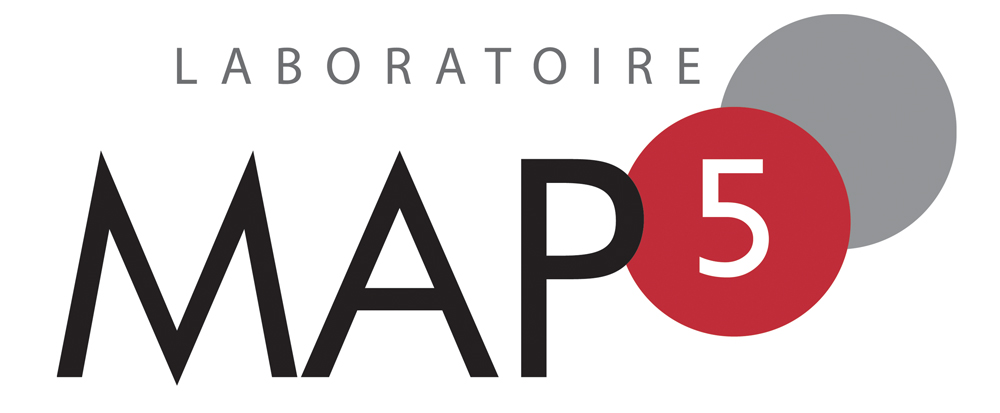Partiellement supporté par :
 SHEPI
SHEPI
Février 2013
jeudi 21 février (salle 201, IHP) 14h30 a 17h30 : Omer Angel (UBC, Vancouver) Half planar random maps. certain half planar random maps enjoy a certain "domain Markov" property. I will explore this property, describing work with Gourab Ray, as well as an application of this property to study exponents for critical percolation on several models of random planar maps (work with Nicolas Curien).
Mars 2013
jeudi 28 mars 14h30 a 17h30 : Milton Jara (IMPA, Rio de Janeiro) Fluctuations non linéaires des systèmes de particules. On discutera l'obtention des processus spatio-temporels non linéaires comme limites d'échelle des systèmes de particules. En particulier, on obtiendra des limites d'échelle des fonctionnels additifs du processus d'exclusion faiblement asymétrique en termes des observables de l'équation KPZ/Burgers stochastique. En dépendent du temps, on discutera des autres applications et variations sur le sujet. En collaboration avec Patricia Gonçalves (PUC-Rio de Janeiro), Massimiliano Gubinelli (CEREMADE-U. Paris-Dauphine), Sunder Sethuraman (Arizona) et Cédric Bernardin (ENS-Lyon).
Septembre 2013
09 et 10 septembre (Rouen) Rencontres de probabilités 2013 Page web
Octobre 2013
jeudi 24 octobre
11h00 à 12h30 : Cyrille Lucas (LPMA, Paris Diderot)
Agrégation Limitée par Diffusion Interne (IDLA) Uniforme
- travail en collaboration avec Itai Benjamini, Hugo Duminil-Copin et Gady
Kozma.
L'Agrégation Limitée par Diffusion Interne (IDLA) est un modèle de
croissance dans lequel des ensembles aléatoires sont construits
récursivement. A chaque étape, une marche aléatoire est lancée à l'origine
et le premier point qu'elle visite à l'extérieur de l'agrégat est ajouté à
l'agrégat. Dans la version uniforme de ce modèle, chaque nouvelle marche
aléatoire part d'un point distribué uniformément sur l'agrégat déjà
construit. Nous étudierons les différences majeures entre les deux modèles,
ainsi que leurs liens avec certains modèles de croissance déterministes.
Enfin, nous montrerons que la forme limite de l'IDLA Uniforme est une boule
euclidienne.
14h00 à 17h00 : Gady Kozma (Weizmann Institute of Science, Israel)
High dimensional percolation.
We survey critical and near-critical percolation in dimensions >
6 starting from the eighties and ending in recent results. High dimensional
percolation is very different from the more famous two dimensional case and
the talk is aimed at elucidating some of these differences. No background
on percolation will be assumed.
Novembre 2013
jeudi 28 novembre
11h00 à 12h30 : Richard Kraaij et Frank Redig
(Delft University - Netherlands)
Path space large deviations and dynamical
Gibbs-non-Gibbs transitions.
Motivated by the phenomenon of dynamical Gibbs-non-Gibbs
transitions, we look at the trajectory of the magnetization, empirical distribution and
empirical measure in the context of Markov processes with local interactions such as Glauber dynamics.
The Gibbs-non-Gibbs transition phenomenon boils down to the the study of optimal
trajectories conditioned to arrive at a fixed end point. These trajectories can be unique (Gibbs)
or non unique (non-Gibbs).
The large deviation properties of these trajectories lead to variational problems reminiscent of
Lagrangian and Hamiltonian mechanics. Using the recent formalism developed by Feng and Kurtz,
we show how to compute the Lagrangian and Hamiltonian, and how to derive basic properties of
optimal trajectories, starting from simple examples in the context of Brownian motion.
Based on recent joint work with Frank den Hollander, Richard Kraaij,
Feijia Wang and Willem van Zuijlen.
14h00 à 17h00 : Vladas Sidoravicius (IMPA, Rio de Janeiro - Brasil)
Low Dimensional Percolation and Ising Models at Criticality.
In three parts of my talk I will explain and prove several new results
on the structure of critical and near critical percolation in 2D, Slabs and
3D Ising models:
1. Self-destructive percolation.
2. Continuity of the phase transition for the Bernoulli percolation in 3D
slabs.
3. Absence of spontaneous magnetization for 3D Ising model.
Talk is based on several recent works which were done in collaboration with
M. Aizenman, H. Duminil-Copin, I. Manolescu, D. Kiss, G. Kozma, V. Tassion.

